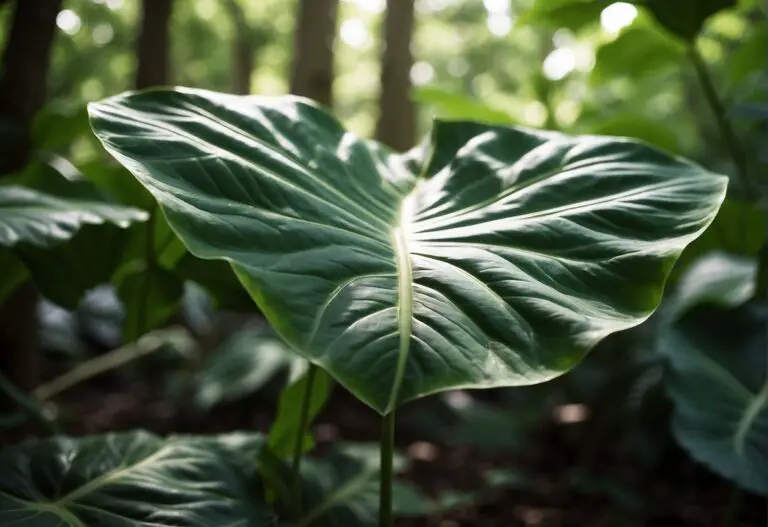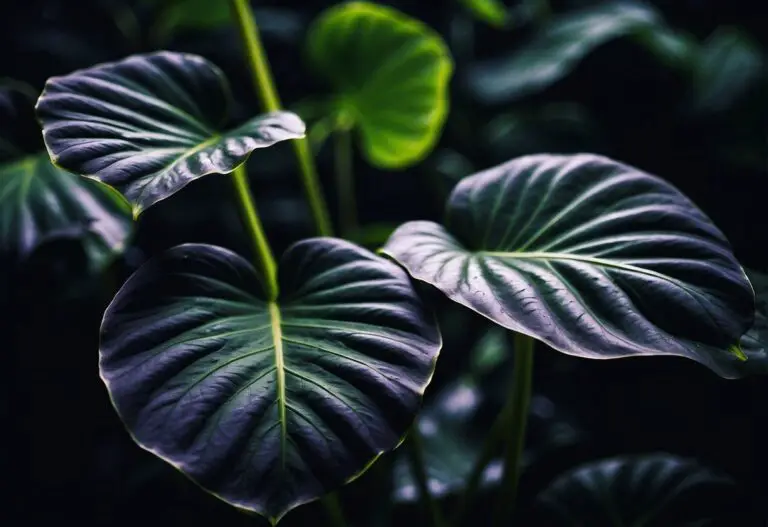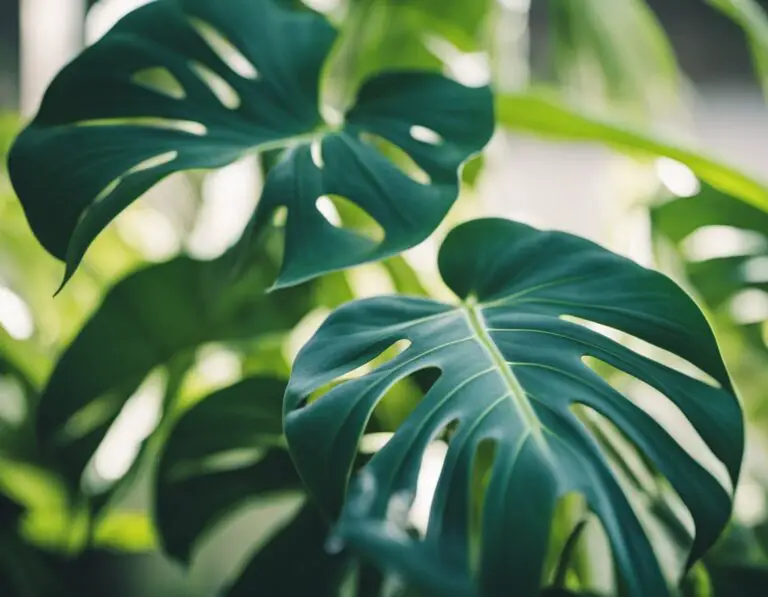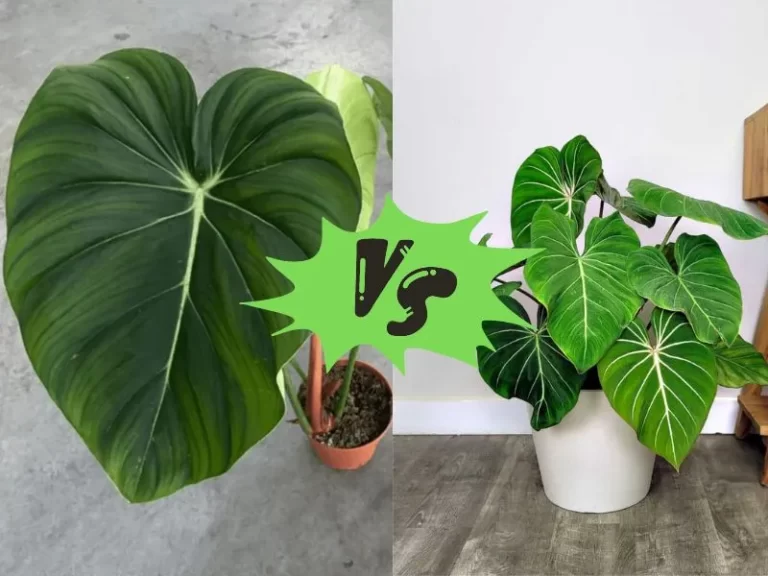Joepii Philodendron: A Guide to Growing and Caring for This Stunning Plant
The Joepii Philodendron is a rare and exotic plant that has captured the hearts of many plant enthusiasts. This plant is native to the Amazon rainforest in Brazil and is known for its unique features and coloration.
It is a tri-lobed plant that looks like it has been damaged and chewed upon. The Joepii Philodendron is one of the most expensive philodendrons, and it is difficult to source in the wild.

If you are lucky enough to get your hands on a Joepii Philodendron, you will want to take good care of it. Proper care is essential to keep this rare plant thriving.
In this article, we will cover everything you need to know about the Joepii Philodendron, including its history, identifying characteristics, natural habitat, and how to care for it. We will also discuss propagation techniques, common issues and solutions, and design and styling.
Understanding the Joepii Philodendron

If you’re a plant enthusiast, you might have heard of the Joepii Philodendron, a rare and exotic plant that has become a favorite among collectors. In this section, you’ll learn more about this unique plant, including its origin, habitat, and botanical characteristics.
Origin and Habitat
The Joepii Philodendron is native to South America, where it grows in the tropical rainforests of Brazil. It was first discovered in 1991 by Dutch botanist Joep Moonen, who named the plant after himself. Since then, it has become a highly sought-after plant due to its rarity and unique appearance.
Botanical Characteristics
The Joepii Philodendron is an evergreen climbing hemiepiphyte. It has tri-lobed leaves that are green in color and have a unique, almost chewed-up appearance. The plant is known for its strong, sturdy stems that allow it to climb and grow to great heights. It also produces small, white flowers that bloom in the spring and summer.
One of the most interesting things about the Joepii Philodendron is that it is a hemiepiphyte. This means that it has two growth phases: terrestrial and epiphytic. In its terrestrial phase, the plant grows on the forest floor like a regular plant. However, in its epiphytic phase, the plant grows on other plants, using them for support but not as a source of nutrition.
Overall, the Joepii Philodendron is a fascinating plant with unique characteristics that make it a favorite among collectors. Whether you’re a seasoned plant enthusiast or just starting out, this plant is sure to capture your attention and add a touch of exotic beauty to your collection.
Caring for Your Joepii Philodendron

If you want to grow a healthy Joepii Philodendron, you need to provide it with the right care. Here are some tips to help you keep your Joepii Philodendron healthy and thriving.
Ideal Soil Conditions
The Joepii Philodendron prefers well-draining soil that is rich in organic matter. You can use a mix of peat moss, perlite, and bark to create a soil mix that is perfect for your Joepii Philodendron. Make sure the soil is moist but not waterlogged, as this can cause root rot.
Watering Requirements
Joepii Philodendron likes to be kept moist but not wet. Water your plant when the top inch of soil feels dry to the touch. During the growing season, you may need to water your plant more frequently. Avoid overwatering, as this can cause root rot.
Light and Temperature
Joepii Philodendron prefers bright, indirect light. Direct sunlight can scorch the leaves of your plant. Keep your plant in a warm room with temperatures between 65 and 80 degrees Fahrenheit. Avoid exposing your plant to cold drafts or temperatures below 55 degrees Fahrenheit.
Fertilization Strategies
Joepii Philodendron benefits from regular fertilization during the growing season. You can use a balanced, water-soluble fertilizer every two weeks. Avoid fertilizing your plant during the winter months, as growth slows down during this time.
Pruning and Maintenance
Joepii Philodendron doesn’t require a lot of pruning, but you can remove any yellow or dead leaves to keep your plant looking healthy. You can also trim back any leggy stems to encourage bushier growth. Keep an eye out for pests like spider mites and mealybugs, and treat them promptly if you notice an infestation.
Remember, caring for your Joepii Philodendron isn’t difficult as long as you provide it with the right care. With a little bit of attention, your Joepii Philodendron will thrive and bring beauty to your home.
Propagation Techniques

If you’re looking to propagate your Joepii Philodendron, there are three main methods you can use: stem cuttings, air layering, and seed propagation. Each method has its own advantages and disadvantages, so it’s important to choose the one that works best for you and your plant.
Stem Cuttings
Stem cuttings are the most common method of propagating Joepii Philodendrons. To do this, you’ll need to take a cutting from the stem of your plant and root it in soil or water.
Cut a 4-6 inch piece of stem, making sure to include at least one node. Remove the bottom leaves, and dip the cut end in rooting hormone before planting it in soil or placing it in water.
Air Layering
Air layering is a more advanced method of propagation that involves creating a new root system on a stem that is still attached to the parent plant. To do this, make a small cut in the stem and wrap it with moist sphagnum moss.
Cover the moss with plastic wrap and secure it in place with tape. After a few weeks, roots should start to form, and you can cut the stem below the new root system and plant it in soil.
Seed Propagation
Seed propagation is the least common method of propagating Joepii Philodendrons because it can be difficult to find seeds. If you do have seeds, you can plant them in soil and keep them moist until they germinate.
However, keep in mind that Joepii Philodendrons grown from seed may not be identical to the parent plant, so you may end up with a plant that looks different than what you were expecting.
Remember to be patient when propagating your Joepii Philodendron, as it can take several weeks or even months for new roots to form. With a little bit of care and attention, however, you can easily propagate your plant and enjoy its beauty for years to come.
Common Issues and Solutions
Pest Problems
Joepii philodendron is generally a hardy plant, but it can be prone to pest infestations. The most common pests to affect your Joepii philodendron are spider mites and mealybugs. Spider mites can cause leaf discoloration, while mealybugs can cause leaf drop.
To prevent these pests from affecting your plant, make sure to keep it clean and dust-free. If you notice any signs of infestation, use a mild soap solution to wash the plant thoroughly. You can also use insecticidal soap or neem oil to control the pests.
Diseases and Treatments
Joepii philodendron is susceptible to root rot, which is caused by overwatering and poor drainage. If you notice that your plant’s leaves are yellowing and the soil is damp, it may be suffering from root rot. To treat this, remove the affected leaves and allow the soil to dry out completely before watering again.
You can also repot the plant in fresh, well-draining soil. Another common disease that can affect your Joepii philodendron is leaf spot. This can be caused by overwatering, poor air circulation, and high humidity. To treat this, remove the affected leaves and improve air circulation around the plant.
Environmental Stress
Joepii philodendron can be sensitive to changes in its environment. If you notice that your plant’s leaves are drooping or turning yellow, it may be suffering from environmental stress. This can be caused by a variety of factors, including changes in temperature, light, and humidity.
To prevent this, make sure to keep your plant in a stable environment with consistent temperatures and humidity levels. Avoid placing it in direct sunlight or near drafts. If you need to move your plant to a new location, do so gradually to allow it to acclimate to the new environment.
Design and Styling
Potting and Repotting
When it comes to potting your Joepii Philodendron, you want to choose a container that is slightly larger than the one it is currently in. This will give the plant enough space to grow and thrive. Make sure the pot has drainage holes at the bottom to prevent water from accumulating and causing root rot. Use a well-draining soil mix that allows for proper aeration and moisture retention.
Repot your Joepii Philodendron every two to three years, or when the roots have outgrown the container. To repot, gently remove the plant from its current container, loosen the roots, and place it in the new container with fresh soil. Water thoroughly after repotting to help the plant adjust to its new home.
Display Ideas
Joepii Philodendrons can add a tropical touch to any room in your home. They look great in hanging baskets, on shelves, or as a statement piece on a table or stand. Consider pairing your Joepii Philodendron with other houseplants to create a lush and vibrant display.
If you have a large Joepii Philodendron, you can create a dramatic focal point by placing it in a decorative planter on the floor. Choose a planter that complements your decor and allows the plant to shine. You can also use a trellis or moss pole to support the plant as it grows taller.
Overall, the Joepii Philodendron is a versatile and beautiful plant that can enhance any space with its unique foliage. With proper potting and styling, you can create a stunning display that showcases the beauty of this tropical plant.
Joepii Philodendron in Plant Collections
If you’re looking to add a unique and rare plant to your collection, the Joepii Philodendron is a great choice. This plant is highly sought after by collectors and plant enthusiasts alike for its unique, beautifully shaped leaves and intriguing natural history.
Companion Plants
When it comes to companion plants, the Joepii Philodendron is a great choice. This plant pairs well with other tropical plants, such as ferns, orchids, and bromeliads. You can also pair it with other Philodendron species, such as the Monstera Deliciosa or the Philodendron Birkin, for a stunning display of foliage.
Creating a Focal Point
If you’re looking to create a focal point in your plant collection, the Joepii Philodendron is an excellent choice. You can use it as a centerpiece in a grouping of plants or as a standalone plant in a decorative pot. Its unique foliage and natural history make it a great conversation starter and a stunning addition to any collection.
Overall, the Joepii Philodendron is a must-have for any serious plant collector. Its unique foliage, natural history, and versatility make it a great addition to any plant collection.
Frequently Asked Questions
How do you care for a Philodendron Joepii plant?
To take care of your Philodendron Joepii, you should keep it in a well-draining soil mix and water it when the top inch of soil is dry. This plant prefers bright, indirect light and temperatures between 65-80°F.
Fertilize your plant monthly during the growing season with a balanced fertilizer. Keep an eye out for pests, as this plant can be susceptible to spider mites and mealybugs.
What are the differences between Philodendron Joepii and Philodendron 69686?
Philodendron Joepii and Philodendron 69686 are two different plants. While they both belong to the Philodendron genus, they have distinct differences in appearance. Philodendron Joepii has long, strap-shaped leaves with irregular edges, while Philodendron 69686 has heart-shaped leaves with a more uniform appearance.
What is the typical size of a mature Joepii Philodendron?
A mature Philodendron Joepii can grow up to 4 meters tall, with thick, leathery leaves that can reach up to 1 meter long. This plant can take several years to reach its full size, so be patient and give it plenty of room to grow.
Can you explain the propagation process for a Joepii Philodendron?
Joepii Philodendrons can be propagated by stem cuttings. Take a cutting that is at least 6 inches long and has several nodes.
Remove the lower leaves and dip the cut end in rooting hormone. Plant the cutting in a well-draining soil mix and keep it in a warm, humid environment until roots develop.
What makes the Philodendron Joepii considered a rare plant?
The Philodendron Joepii is considered rare because it is difficult to find in the wild and is not commonly cultivated. It was discovered in 1991 by a Dutch naturalist named Joep Moonen in eastern French Guiana.
Its unique appearance and limited availability have made it a highly sought-after plant among collectors.
What is the unique history or origin of the Philodendron Joepii?
Philodendron Joepii is an exotic plant native to the South American continent, particularly the Amazon rainforest in Brazil. It was discovered by Joep Moonen during an expedition to study the flora and fauna of the region. Moonen named the plant after himself, and it has since become a popular houseplant among collectors.






